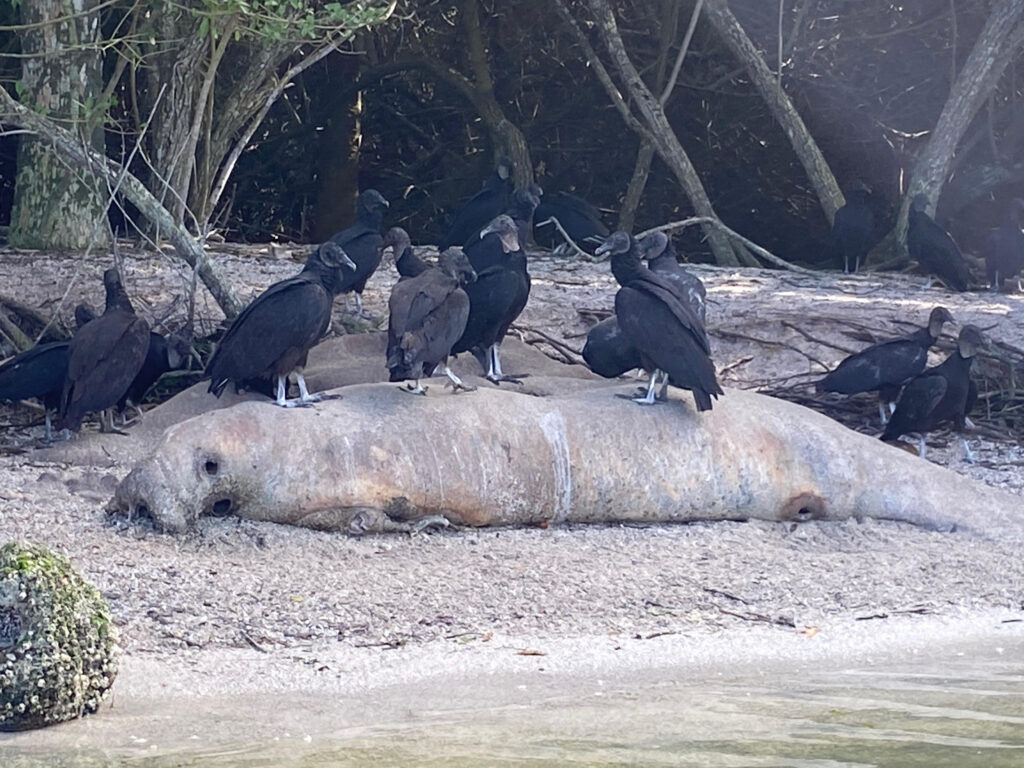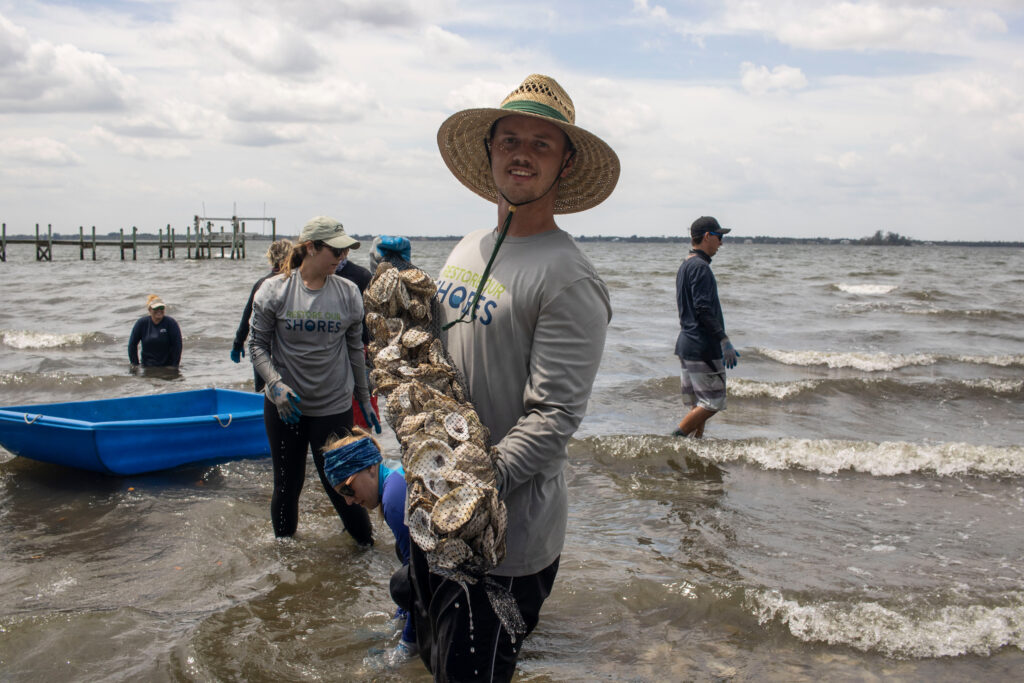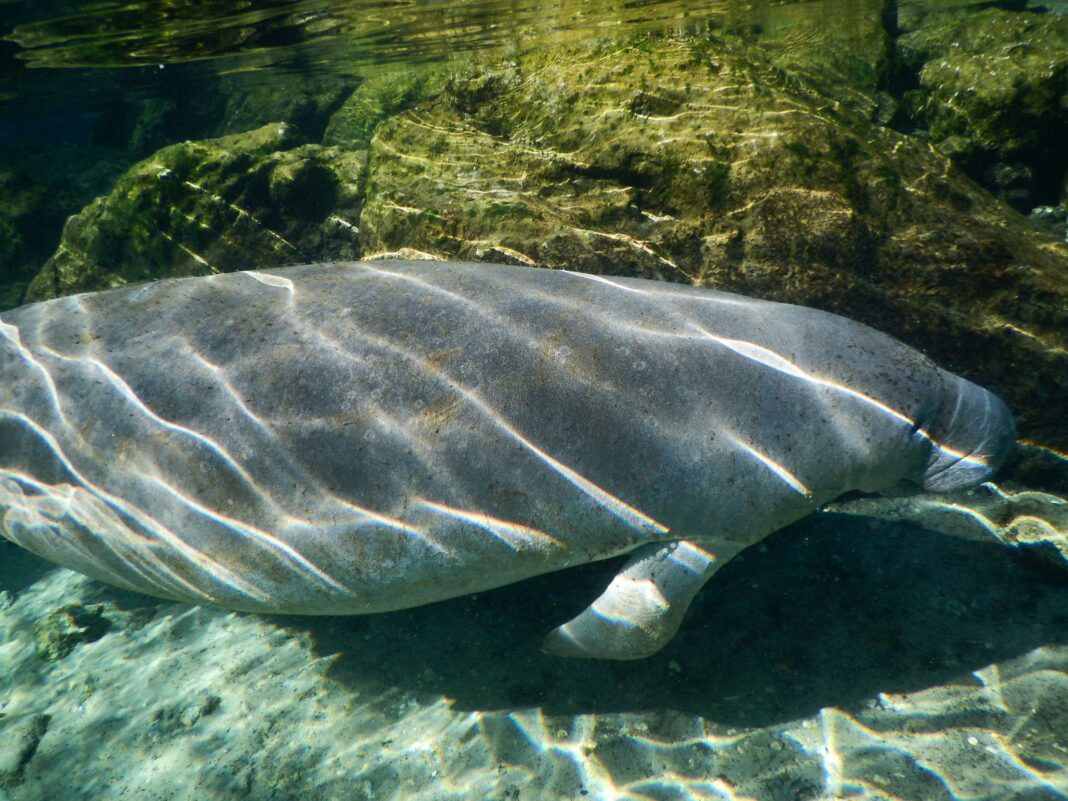A special sales tax provides crucial funding for cleaning up a Florida lagoon to restore eelgrass, the manatees’ favorite food.
In 2017, the Florida Fish & Wildlife Commission (FWC) estimated that there were upwards of 6,000 manatees in Florida waters. The news led to a reclassification of the manatee from “endangered” to “threatened” on the Endangered Species list.
But any elation was premature. Over the past three winters, according to FWC estimates, 2,400 manatees — more than a third of the entire population — have died, overwhelmingly by starvation. Most of the deaths have been in east Florida’s Indian River Lagoon, a 156-mile-long region along the middle of the state’s Atlantic coastline. Necropsies performed by the State of Florida attribute the starvation deaths to the loss of seagrass, the manatee’s primary food source.
This number of manatee deaths was “unprecedented,” according to Dr. Martine deWit, the chief biologist for the Florida Fish and Wildlife Department. “There were so many deaths, we couldn’t do necropsies on all of them.” Earthjustice, an environmental law organization, filed suit in 2022 on behalf of three conservation groups against the federal Department of Environmental Protection, charging that the Department failed to protect manatees from water pollution and allowed the lagoon to deteriorate to the point of near “ecologic collapse.”
Most of the manatee deaths — 751 in the past three years — occurred south of Daytona Beach in Brevard County, where the lagoon is heavily polluted. Pollution causes algae blooms that block sunlight from reaching the bottom of the lagoon, killing off the seagrass.

Locals saw this coming a decade ago, after massive numbers of fish died in the lagoon. Though, at the time, nobody thought the manatees would die, too, in 2016, Brevard voters approved a special sales tax to assist in cleaning up the lagoon. Since then, the county has spent over $340 million on programs to clean the lagoon waters, approaching the issue from several angles. The Florida Department of Environmental Protection kicks in matching grants on some of the projects.
The county’s approaches include tying leaky septic systems, the largest polluter, into sewer lines. Where that isn’t possible, older septic systems are being replaced by newer versions that reduce nutrient discharges, with the sales tax subsidizing much of the homeowner cost. The tax is also financing the upgrade of sewage treatment plants to stop overflows into the lagoon during storms, and the construction of baffle boxes, positioned along major tributaries to filter out polluting nutrients and debris from stormwater runoff before they get to the lagoon.
Brevard County is dredging Muck, a black sediment of organic matter, clay, and sand — sometimes several feet thick — off the lagoon floor so seagrass can again take root. Muck is the result of dying vegetation that has been swept into the lagoon.
The Brevard Zoo and the University of Florida, again thanks to funding from the special sales tax, are undertaking the ambitious replanting in the lagoon of millions of clams and oysters, nature’s natural water filters. The bivalves used to naturally live there, but oysters were harvested to extinction, and most clams died in the polluted waters.
The head of the zoo effort, Olivia Escandell, refers to the bivalve project as “the liver in the river” as they filter the lagoon waters. Local restaurants have been contributing 27,000 oyster shells a month to the effort — the shells are used in gabions (wirework containers filled with shells, rock, concrete, and other materials) that provide a base on which new oysters can grow.
As for clams, the University of Florida’s Whitney Lab in St. Augustine managed to locate and breed surviving colonies of what they refer to as Super Clams. According to the project leader, Dr. Todd Osborne, these clams have evolved to the point that they can survive in the algae-choked waters of the lagoon. “We think of the clams as Darwinian natural selection survivors.”
To date, University scientists have released over ten million Super Clams, and the results look promising. The clams are breeding. “We found [new] clam larva in the lagoon, so we know it’s working,” says Dr. Osborne. “They’re doing it. They’re reproducing.” The scientists are particularly encouraged by the fact that the new clams have survived recent algae blooms. “Reintroducing clams, especially those adapted to the way the lagoon is today, should be a huge step in the right direction for improving our water quality,” says Osborne.

All this work is starting to pay off. Water quality, as measured by the Marine Resource Council, has risen from an F grade to a D in some areas. As of October 2023, manatee deaths in the Brevard lagoon area had fallen to forty-seven for the year.
Chuck Jacoby, who monitors sea grass as Supervising Environmental Scientist for the St. Johns River Water Management District, calls these results “really encouraging.” All this work under the county sales tax program has led to more light filtering through to the bottom of the lagoon over the past two years, he says. “When seagrasses get enough sunlight, they can cope with just about anything.”
In 2021, the State of Florida Fish and Wildlife Agency initiated a feeding program for the manatees — an estimated 400,000 pounds of romaine lettuce. The FWC staff fed the manatees that cluster in the warm discharge water of a power plant. But now that seagrass is returning, the program has been discontinued for 2024.
The Brevard Indian River Lagoon Coalition, a citizen’s education and information non-profit, holds periodic public forums to bring scientists and lagoon experts together with local residents to report on the lagoon’s status. The meetings are designed to teach members of the public about what they can do as individuals to help the clean-up. Typically, 300‒400 people show up for each meeting.
Craig Wallace, chairman of the coalition, wants tougher regulations to clear up water before it gets to the lagoon. “The oysters and clams are good, but we need to stop the pollution before it starts,” Wallace says. “Right now, state regulations aren’t strong enough, or enforced enough.”
But Chuck Jacoby is encouraged by the progress made to date. “Ecological systems are pretty amazing if we just get out of the way.”


